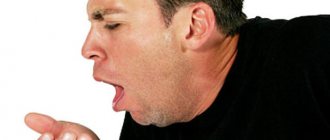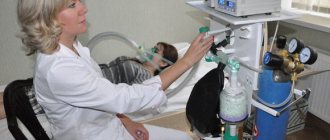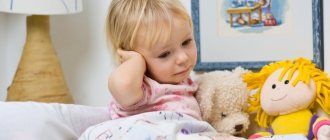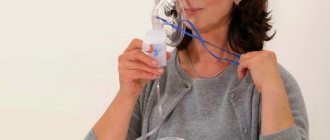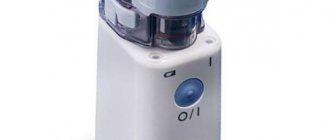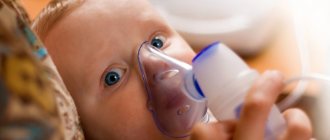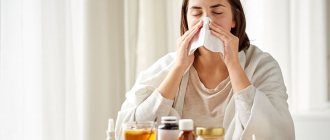Inhalation therapy has been known since ancient times. More than 130 years ago, the first inhaler was invented. A nebulizer is an advanced device for our time. Translated from Latin nebula means “cloud”. In a nebulizer, the drug is crushed into small, medium and large particles, depending on which they settle in the upper or lower parts of the respiratory tract. Such therapy should only be prescribed by a doctor.
Inhalation is the most commonly used method of therapy. Parents of children who often suffer from respiratory diseases know this. Inhalation is a method of administering a drug by inhalation. It is of natural origin and artificial. Natural means sanatoriums, resorts, and so on. And artificial inhalation is the use of special devices during the procedure. With the help of an inhaler, medicinal substances enter the body in the form of steam, aerosol, etc. Treatment with the inhalation method is very convenient. A child or adult feels virtually no discomfort.
Evolution of methods
The easiest and most pleasant way to perform inhalations is, of course, clean sea air, a walk in a pine forest, and so on. It is not for nothing that sanatoriums for those with lung problems are located exactly where there is clean air.
The next type of inhalation is inhalation of aromatic oils or incense. Even in ancient times, people threw aromatic herbs onto hot coals and inhaled them. During the combustion process, they released essential oils, which were a means of inhalation.
Everyone knows about inhalation using potatoes. But why potatoes? But because the peel of the root vegetable contains the alkaloid solanine, which is released in small quantities in evaporation. Thanks to this, it expands the lungs slightly. Naturally, this method is unpredictable, because some varieties have more solanine and others less.
There are other inhalation methods, but they are very dangerous and can cause burns to the upper respiratory tract. They were replaced by inhalations using nebulizers.
How to perform the manipulation
We all remember grandma's old method of breathing over potatoes. This is, of course, an effective remedy, but outdated. Nowadays, inhalers have appeared that are no less effective. In order to use the device, you need to know how to inhale children correctly. Below are some tips:
- It is best to carry out manipulation after eating
- For teenagers, inhalation is done for five to seven minutes, for younger children three to four minutes.
- If you have diseases of the throat, lungs, or bronchi, you need to inhale through your mouth and exhale through your nose. If you have a disease of the nose, then you need to inhale and exhale through your nose.
- You need to inhale the drug slowly, slowly.
- Follow the dosage prescribed by the doctor.
- How many days can a child receive inhalations? Experts recommend no more than ten per course.
In order for the child not to get nervous, scream or resist, you can turn on cartoons or somehow interest him.
In order to carry out inhalation, it is necessary not only to choose an effective medicine, but also to choose the right nebulizer.
When a child or adult starts to have a cold, the first thing that may appear is a cough. It can be dry, painful or moist with sputum difficult to separate. And then parents have a question: is it possible to inhale a child with a fever? We'll talk about this a little below.
Inhalation is one of the oldest methods of treating respiratory diseases. The ancient Roman physician Galen noted that people who have a cough feel better if they walk near the sea for a long time.
How to do inhalations correctly
At the first signs and symptoms of a viral, chronic or acute respiratory tract disease, use inhalation. Taking into account the growing demand, the industry has developed and mastered the production of special devices to help with this procedure.
Devices
The manipulation is carried out with a nebulizer or pocket inhaler with a special solution already prepared in them. The former are more often used for home treatment, the latter (portable) are convenient to take with you to work or for a walk. Pocket inhalers have become indispensable devices for people suffering from bronchial asthma.
In order for the effect to be noticeable after several procedures, it is better to follow the following rules:
- do not forget about the time of inhalation (immediately after sleep and in the evening);
- during the procedure you cannot read or talk, be as focused as possible on the treatment, the patient must be in a sitting position;
- clothes in the neck area should be open, in which case breathing will not be difficult;
- if you decide to be treated by inhalation, you should not take additional expectorants;
- Young children should not inhale with hot water, otherwise they will not get a burn to the respiratory tract;
- it is necessary to control the patient’s temperature;
- the procedure should take 10 minutes for a child, 15 minutes for an adult, it is not recommended to do the procedure longer;
- the interval between procedures should be at least three hours;
- the medicine and dosage for inhalation with a nebulizer should be selected by a doctor;
- Before carrying out the procedure, be sure to rinse your mouth with a salty water solution;
- breathing should be deep and not too frequent;
- Depending on the type of disease, use different attachments.
Using your device
A nebulizer is a device that is widely used in medical practice. Here's when to use it:
As can be seen from the list of conditions for which a nebulizer is used, we can say that inhalation is necessary for children whenever a disease of the respiratory system begins to develop. However, the procedure must be coordinated with a doctor. He will examine the child, establish the correct diagnosis and, based on this, make a prescription. It is he who will determine how many times to give inhalations to the child. This is a very important question not to overdo it. The doctor will also tell you how many days children receive inhalation. All treatment must be coordinated with a specialist, regardless of who is sick, an adult or a child.
The inhalation method of administering medications is very effective. This method allows you to adjust the size of the drug by spraying, as well as the depth of penetration of the drug.
Inhalations for children against cough and runny nose
Indications for inhalation during a runny nose and cough in a child
- Acute and chronic rhinitis in the acute stage
- Acute tonsillitis - the presence of an inflammatory process in the tonsils
- Acute pharyngitis - the presence of an inflammatory process in the nasopharynx
- Acute and chronic bronchitis
- Pneumonia
Contraindications for inhalations
- Tendency to nosebleeds, hypertension
- Severe respiratory failure
- Cardiovascular failure
- Increased body temperature - more than 37.5 °
Separately, it is worth mentioning the fact that inhalations for children against coughs and runny noses at home require strict adherence to the pediatrician’s prescriptions, and it is strictly not recommended to independently select medications and carry out the procedure without first consulting a doctor!
Contraindications
So, is it possible to give inhalations to a child with a fever? The presence of fever in a child is a contraindication for inhalation.
Some parents mistakenly believe that it is possible to give inhalations to children with fever. This is wrong and dangerous. Even a temperature of 37.5 is a contraindication for inhalation. Carrying out inhalations will negatively affect the child’s condition if there is hyperthermia. Particular attention should be paid to the fact that you cannot breathe steam at high temperatures. Hot steam entering the respiratory tract artificially increases body heat.
Here are some more contraindications:
After the nebulizer has been used, it is not recommended to eat or exercise for two hours.
When to inhale with pulmicort, before or after meals?
For nebulizer inhalations to be as effective as possible, they must be done correctly:
- 1.5-2 hours before and after the procedure you should not exercise or eat;
- a few hours before and after you need to stop smoking;
- during inhalation, nothing should restrict breathing - clothing should be loose;
- if it is necessary to treat nasal diseases or runny nose, the procedure is performed using a special attachment;
- 2 hours before the procedure you should not take any medications;
- After the procedure, you need to rinse your mouth with warm water, but do not swallow it.
It is highly advisable not to talk for half an hour after finishing the inhalation.
The doctor must determine what to breathe in the inhaler, because different diseases require the use of a specific drug.
| Disease | Effective treatment with a nebulizer |
| A sore throat | If it is not infectious, then inhalations with Naphthyzine or Epinephrine can be carried out using a nebulizer. The use of these medications should only be as prescribed by a doctor, because they have a vasoconstrictor effect. As a traditional medicine, you can use a decoction of calendula flowers - 1 tablespoon of plant material per 200 ml of water, boil in a water bath for 3 minutes, cool and be sure to strain. |
| Runny nose | If it is of an allergic type or another, but not associated with an infection, then you can pour Borjomi mineral water or sodium chloride solution into the nebulizer. They will moisturize the nasal mucosa and relieve irritation, which will make you feel better and make breathing easier. For purulent runny nose and sinusitis, inhalation with Decasan solution helps, and Miramistin/Furacilin will be effective for runny nose of bacterial origin. |
| Bronchitis | Inhalations will help with prolonged exacerbation of the chronic form of the disease. Dexamethasone has a powerful therapeutic effect, but specific prescriptions must be made by a doctor. |
| Dry cough | A non-productive cough involves using regular mineral water in a nebulizer. It softens breathing, helps moisturize the mucous membrane of the respiratory tract, and within a day of procedures provokes active secretion of sputum. |
| Choking cough | Asthmatic cough, with attacks of suffocation, threatens the health and sometimes even the life of a person, therefore, in this case, Berodual is used for inhalation, a drug available only by prescription. If attacks of such cough are rare, then Pulmicort will help. |
| Dry cough due to acute respiratory disease (cold) | The simplest thing is to use a solution with Mucaltin. For the first day, such inhalations are carried out every 4 hours, then the frequency is reduced to 2 times a day, and as soon as the process of sputum discharge begins, the procedures should be stopped. |
| Moist cough | The optimal choice would be Lazolvan solution. The drug promotes rapid and complete discharge of sputum, relieves irritation, and stops the cough reflex. |
Inhalations for children and adults should be done when the first signs of the disease appear. It is this procedure that allows you to “deliver” the drug precisely to the pathological focus, quickly and for a long time to alleviate the patient’s well-being.
The rules for inhalation with a nebulizer indicate three stages of the procedure:
- preparatory;
- actual manipulation;
- post-treatment of the oral cavity, care of the device.
Deep exhalations and inhalations - this is how you will breathe correctly when inhaling with a nebulizer. They are done calmly and slowly.
Breathing through your nose or mouth during the procedure depends on the disease being treated:
- when coughing, bronchitis, bronchospasm - inhale through the mouth, exhale through the nose;
- when you have a runny nose, exhale through your mouth and inhale only through your nose.
The correct way to breathe through a nebulizer with your mouth is as follows:
- a slow deep breath is taken - you need to reach the maximum point when more air simply cannot fit into the lungs;
- at the “highest point,” stop breathing for 1-2 seconds;
- Immediately exhale through your nose.
Doctors say that after the procedure you should not drink for half an hour and eat food for 1 hour. Therefore, it is generally accepted that you need to use a nebulizer one and a half hours before and after a meal.
To inhale a child correctly, you must first prepare him for the procedure: at the age of 6 months and older, the baby may be frightened by the sound of a working nebulizer, so he must first show the device itself, turn it on and off several times, and let the child touch it with his hands.
Children's nebulizer Omron
An excellent option would be to purchase a nebulizer in the form of a toy - such devices are made in the shape of bears, bunny, snowman. And it is better to start “getting acquainted” with the device in advance, before the onset of the disease and the need for the procedure.
Doctors recommend not to put a mask on a child for inhalation at all, but to keep it at a short distance from the face. If parents have taken care in advance to introduce the baby to the nebulizer, then he will not feel fear, but will begin to look at it with interest. It is unlikely that he will turn his head away hysterically - the directed steam with the drug will definitely get into the respiratory tract.
It is better if the procedure with a baby is carried out with two assistants - one holds the child in his arms, the second holds the mask in front of his face.
If you are going to carry out inhalations with a nebulizer under the age of one year, then you need to know the features of this procedure:
- the patient should not have elevated body temperature;
- the manipulation is carried out only an hour after eating and preferably not at the moment when the baby wants to sleep;
- if the child is fast asleep, you can use the nebulizer while he sleeps (the device buzzes loudly, so the baby may wake up);
- if there are no prescriptions from a doctor, then the safest thing is to use mineral water for inhalation, or a decoction of chamomile flowers;
- the time of the procedure at this age can be reduced to 2-3 minutes;
- if the child categorically rejects the mask, then you can simply hold it in front of your face and move it behind your head - the vapors of the drug will still penetrate into the pathological focus.
You need to know that inhalation with a nebulizer is prohibited for children with:
- frequent nosebleeds;
- sore throat;
- an acute attack of laryngitis, accompanied by swelling of the larynx and suffocation;
- increase in body temperature.
You cannot use a nebulizer to inhale a child or an adult if:
- high body temperature (over 37 degrees);
- arrhythmias, tachycardia, heart failure;
- unstable blood pressure;
- bullous type emphysema;
- respiratory failure occurring in severe third degree;
- frequently recurring nosebleeds;
- pneumothorax.
It is best to do this an hour and a half after the manipulation. Why should you not eat food immediately after inhalation?
Inhalations after meals can be done:
- The fact is that food that goes down the esophagus, as well as the throat, can absorb particles of drugs that settle on the mucous membranes. Thus, the benefits of the procedure may be reduced and reduced.
- The absorption of active substances will decrease, and the effectiveness of the drugs will be minimal. In addition, there are foods that irritate the walls of the throat and can cause increased salivation. This in turn also affects the performance of manipulations and the effectiveness of the procedure.
- The fact is that some doctors generally do not recommend inhalation on an empty stomach or on an empty stomach. This is due to the fact that some drugs may contain essential oils, as well as active components that are quite aggressive.
Carrying out inhalation
When can you feed your baby after inhalation? This question interests many parents, since most often a nebulizer, along with ultrasonic inhalers, is used when treating children. This is because they are very sensitive to viruses and bacteria.
When can a child inhale after a meal:
- Mothers should always be alert and know when to feed their baby. The optimal option for carrying out the procedure is an hour and a half before and after meals.
- However, there are situations when a child has a dry, unproductive cough, which does not allow the baby to breathe normally or even eat.
- Due to a severe dry cough, which is paroxysmal, the baby may experience dehydration, as well as a lack of nutrients. Often, after suffering from such illnesses, children quickly lose weight.
A modern nebulizer
Saline solution is an ordinary aqueous solution of sodium chloride, that is, table salt. In pharmacies it is sold in purified form, without additional impurities and using distilled water. However, this substance is used in the treatment of acute respiratory viral infections, as well as influenza.
When to inhale with saline, before or after meals:
- During the manipulation, 2-3 ml of the substance is poured into the nebulizer chamber, and the vapor is inhaled for several minutes. It is worth paying attention that you need to take into account the time frame, and also be tied to the meal.
- It is recommended to inhale with saline 1-2 hours after eating. Nothing bad will happen if the sodium-chlorine solution reacts with food, but the effectiveness of inhalation is enhanced if you follow the rules.
- After all, after eating food, some of the sodium chlorine can be washed off from the walls of the throat, so the effectiveness of treatment is reduced.
The baby inhales
Pulmicort, a hormonal drug from a series of glucocorticosteroids. It is often used to prevent and treat bronchial asthma, as well as during the treatment of dry cough. Inhalations should be carried out in a nebulizer approximately one and a half to two hours after eating. The drug should not be used on an empty stomach, as it is a hormonal substance that can negatively affect the condition of the mucous membranes.
Tips for use
In order not to spoil the nebulizer, it is worth considering some nuances when using it:
Inhalations for children of the first year of life or newborns should be carried out only under the supervision of a doctor. It is he who will determine whether it is possible to do inhalations for children with a fever using a nebulizer or not. You should not look for advice and recipes on your own. If the child cries, does not want to breathe or is afraid, you need to talk to him, explain that the procedure is not scary, and calm him down. And then you can carry out the manipulation. You should not force a hysterical child to breathe with an inhaler or nebulizer.
Recently, the use of a nebulizer has become very popular. Not because it is beneficial to someone, but because its effectiveness has been proven. What is the essence of the device?
How much should you not eat after inhalation with a nebulizer?
- temperature above 38 degrees. If the patient’s temperature is above this mark, then the inhaler will not help; it must first be brought down;
- there is a tendency to pulmonary and nasal bleeding. Using an inhaler in this case will only make you feel worse;
- purulent sore throat;
- suffered a heart attack or stroke and not yet six months have passed;
- there is a pathology of the respiratory tract;
- allergy to a drug. If the patient has at least one contraindication, inhalation cannot be done, even if he suffers from a severe cough.
A child needs inhalations when he is one year old and strictly under the supervision of a doctor. From the stories of one doctor, it is reported that a family administered inhalation to a month-old child at home, as a result of which the baby’s upper respiratory tract was burned and he was urgently sent to the hospital by ambulance.
Experts recommend taking a break of at least 20 minutes, maximum 1 hour. If the recommendations are not followed, the medicine is sent into the stomach along with food. Undesirable effects appear and the therapeutic effect decreases.
Action of the nebulizer
Due to its simplicity and effectiveness, it can be used without problems for both children and adults, without providing any discomfort. Another advantage of its use is that the drug acts on the mucous membranes of the respiratory system. There is no need to wait long for one or another remedy to work. Using a nebulizer allows you to dose medications very accurately, which helps avoid overdoses. There are virtually no side effects when using it.
Today there are a lot of nebulizers. How to choose? In order to choose correctly, you need to know what they are.
Reasons to follow these guidelines
The recommended time intervals between meals and inhalation are determined not without reason. There are several reasons for this that are significant. Among them:
- Possibility of activation of the gag reflex. This situation is quite possible when performing a procedure using aromatic oils. They irritate the walls of the esophagus and stomach, causing symptoms such as heartburn or nausea, which can lead to vomiting. This causes a special reaction when there is a large amount of food in the stomach. The action of vapor on an empty stomach produces a similar effect. Therefore, you should adhere to the golden mean, that is, inhalation between main meals.
- Creating conditions for more efficient absorption of medications. The formation of a protective coating on the walls of the respiratory organs does not have an immediate therapeutic effect. A certain period of time is required for the absorption of medicinal components. Consumption of food or liquid leads to the movement of the drug into the stomach, whereas it should be on the surface of the mucous membrane of the throat, trachea or bronchi. Hence the zero effect of the procedure.
- If the procedure is carried out immediately after a meal, then the therapeutic effectiveness is also zero. The fact is that the medicine will not cover the mucous membrane of the organs affected by the infection, but will settle on the smallest particles of food.
In order not to starve yourself with hunger and thirst due to the need to choose the most suitable time period, it is advisable to inhale before bed. This option is especially suitable for performing inhalation on a small child.
Steam
Affordable and easy to use. They are effective for diseases of the upper respiratory tract. As the name suggests, this nebulizer uses vapor from the medication. In this case, you can use essential oils. The particle size of the drug is 5-10 microns. With their help, the temperature of the medicine supply is regulated. They are contraindicated in hyperthermia. And they are not effective if there are diseases in the lower respiratory organs.
How many minutes to inhale
The duration of the session depends on the diagnosis, the age of the patient and the characteristics of the solution.
As a rule, the doctor prescribes a specific dosage of the drug. For example, 2 ml of saline solution with 15 drops of the drug - for one session. The procedure lasts until the amount of solution in the nebulizer runs out. Nebulizers are sold that turn off automatically when the solution in the tank runs out. So it is better to consult your doctor about the timing.
However, there are general recommendations. The recommended time for an adult is 10 to 15 minutes. In some cases, the duration of inhalation is 20 minutes. But this is only as prescribed by a doctor.
Kids time:
- children under 5 years old - from 2 to 5 minutes;
- children over 5 years old - 5-7 minutes;
- teenagers from 12 years old - 5-10 minutes.
It is better to start the first inhalations with 1-2 minutes, increasing the time every day. Especially if the baby is 2-3 years old.
Fact: exceeding the norm for the duration of a session complicates the disease, rather than cures it.
It is not recommended for children to breathe through a nebulizer for more than 7 minutes. For many children, it is difficult to stay in the same position for a long time. The child may get tired from a long session, which will make him dislike further treatment. It is possible to divide the procedure into two parts: the first 2-3 minutes - inhalation through the throat, the next 2-3 minutes - through the nose. The total will be 4-6 minutes straight.
Compressor
The device is a box. On top there is an input for a tube that is screwed into the mask, and a connector for power from the network. This model has a compressor and a nebulizer itself. High pressure air turns the medicine from a liquid into an aerosol. These drug particles then reach all respiratory tracts. They are very easy to use at home. Among the negative aspects, it is worth highlighting the noisy operation and relatively large dimensions. Inhalation masks are available for both children and adults. There are marks and inscriptions on the containers into which the medicine is poured. Therefore, it is impossible to confuse something. The mask should be held strictly vertically so as not to spill the medicine. Before breathing, the nebulizer should be disinfected. At home, this can be done by boiling.
If a child has a red throat, the procedure can be carried out using 4 ml of saline solution and eucalyptus tincture. Please note, it is tincture, not oil. The compressor nebulizer does not use oil.
Inhalations are effective for bronchitis, pneumonia, and bronchial asthma.
When is the best time to inhale?
The correct mode of performing procedures includes:
- Inhalation is carried out three times during the day. This is the optimal amount for effective therapy.
- The first session should be performed immediately after sleep. The accumulation of mucous masses that occurred during the night will go away. This will ensure control over the night period.
- It is good to carry out the inhalation procedure in the middle of the day. It is permissible to determine a specific time. For example, from 13 to 16 hours. Inhalation is carried out when the patient begins to cough and cannot clear his throat.
- A session should also be held in the evening hours. The most favorable time for this is 18 hours. Experts may prohibit breathing steam later than 1.5-2 hours before falling asleep.
If you do not deviate from these instructions, the healing process will come faster.
Ultrasonic
Using high frequency sound, this type of nebulizer crushes the medicine. Silent operation allows little children to be particularly nervous when carrying out the procedure. The downside is that you cannot use oil solutions, antibacterial and hormonal drugs with it.
There are also electronic mesh nebulizers and many others. Each device is good in its own way.
Inhalation of small patients
Inhalations for infants can only be carried out as prescribed by a doctor. He will determine the required amount of medicinal solution, the duration of the sessions and the frequency of their implementation, taking into account the infant’s feeding regimen. Small children have high sensitivity of the gastrointestinal tract, so consultation with a doctor about feeding and inhalation is very important.
Steam manipulation is contraindicated for children under one year of age. It is also prohibited if the child’s body temperature is elevated (more than +37.1 degrees Celsius).
Nebulizer treatment for children is permitted at elevated temperatures (up to 37.9 degrees). In such cases, it is necessary to first reduce the temperature with an antipyretic (for example, Paracetamol). However, you cannot act at your own discretion; you need to get specialist advice about the admissibility of inhalation against the background of an elevated child’s temperature.
To ensure the effectiveness and safety of children's inhalation, it is recommended to follow the following recommendations:
- At the end of the manipulation, the child is allowed to drink and eat. If a mask was used during the session, then it is necessary to rinse the small patient’s mouth, eyes and face.
- It is recommended to treat children with inhalation under the close supervision of adults. The session should not exceed ten minutes. The course of therapy ranges from 6 to 15 sessions. You must strictly follow all the pediatrician's prescriptions.
If there are no positive results, you should immediately consult a doctor. He will make adjustments to treatment tactics and select the optimal method.
Pediatrician advice
Inhalation therapy should only be prescribed by a doctor. You should not pour various infusions and decoctions into nebulizers. There is a special medicine for these devices that is suitable specifically for nebulizers. Some parents, not understanding how to inhale their children, begin to come up with their own methods. However, this is wrong.
How many times should a child inhale? It all depends on the drug. If inhalation is carried out with antibacterial substances, then its duration can be about ten minutes, but, as a rule, it is difficult to keep children in one place for such a period of time. Therefore, on average, inhalation lasts five to seven minutes. The doctor will also write or tell you how many times to give the child inhalations. For example, a doctor may find it appropriate to use a nebulizer three or four times a day.
There are no contraindications to compressor nebulizers as such. Only a behavioral feature of the child.
The advantage of inhalation therapy over tablets, ointments, and syrups is that the medicine, when inhaled, reaches those parts of the respiratory tract that are damaged. And thus there are no side effects from the gastrointestinal tract, no nausea or vomiting. Inhalation therapy is very effective and safe. And you can even inhale a child with saline solution as a preventive measure (dilute it with the main drug). This is why the use of nebulizers is so common.
Advantages of inhalations in complex therapy
Patients try to be treated safely, i.e. use medication as little as possible. In this sense, inhalations have their advantages:
- inhalation makes it possible to deliver the desired drug directly to the destination, which allows you to stop the source of inflammation as quickly as possible. At the same time, the occurrence of possible adverse reactions is much less common than during oral administration of drugs;
- It should also be noted that inhalations will require less finance to purchase medications than to purchase oral forms (this refers to the price of a specific drug, no matter what);
- during inhalation there is no systemic effect on other organs and systems, and this makes the method more gentle compared to taking pills and injecting medications. The absorption period occurs literally in the first minutes after the start of inhalation procedures;
- the inhalation method is recommended in complex treatment regimens. Drugs of various pharmacological groups (anti-inflammatory, expectorant, antitussive, bronchodilator, etc.) can be used as solutions that are filled into the nebulizer. If the patient took all these drugs orally or intramuscularly, there would be much more side effects;
- The aerosol method of drug delivery makes it possible to quickly stop an attack of bronchial asthma before the arrival of an emergency medical team. In this case, the method helps with life-threatening conditions;
- inhalations help reduce the duration of acute respiratory diseases, as well as normalize local immunity. This makes it possible to reduce the risk of potential complications (meaning the addition of bacterial and fungal microflora). This effect is achieved by quickly suppressing the inflammatory process and stopping the further spread of the viral infection.
All these advantages will occur due to strict adherence to the rules of inhalation therapy, which will be discussed further in our article.
Despite the simplicity of treatment, there are a number of prohibitions and recommendations regarding diet, fluid intake, sleep, and other activities. Patients must determine for themselves the time for the procedures and agree on all the details with the doctor.
There are recipes for inhalations that have a wide spectrum of action during respiratory diseases. Drugs such as Tonzilgon, Propolis, and Calendula can be used here. Use them to ease the course of the disease, improve your general condition, and speed up your recovery. To learn how to prepare such solutions for inhalation, read the instructions below.
- With "Chlorophyllipt", necessary components and application:
- 1 ml of alcohol (one percent) tincture of chlorophyll from eucalyptus leaves;
- saline solution (10 ml);
- mix everything, use a dose of 3 ml of the prepared solution for each 20-minute procedure;
- apply at least three times a day.
- With “Tonsilgon” (a homeopathic remedy based on horsetail, chamomile, dandelion, yarrow, marshmallow, walnut):
- 2 ml of the medicine should be added to the same amount of saline;
- The nebulizer needs to be refilled with 4 ml of the prepared mixture;
- Duration: up to 10 minutes, repeated up to four times a day.
- With Propolis:
- Dilute 1 ml of medicine in 20 ml of saline solution;
- apply 3 ml for each procedure three times a day.
- With "Furacilin":
- Dilute one tablet of the drug in 100 ml of saline solution;
- Use 4 ml of diluted medicine up to two times a day.
- With Calendula:
- Dilute 1 ml of alcoholic infusion of inflorescence extract in 40 ml of saline solution;
- pour 4 ml of the mixture into the nebulizer and perform the procedure a couple of times every day until complete recovery.

